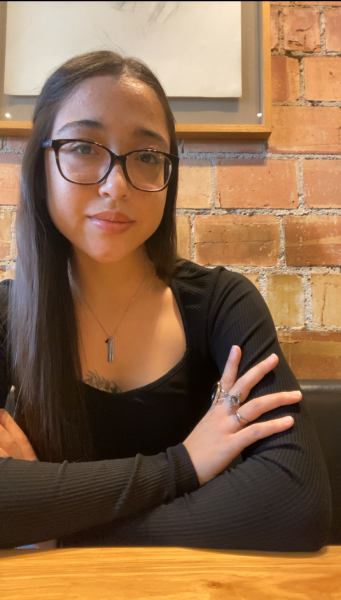The Utah Museum of Fine Arts is currently displaying “Chiura Obata: Layer by Layer.” Focused on his 1932 work “Horses,” this exhibit — and its accompanying video “Layer by layer: The conservation of Chiura Obata’s ‘Horses’ screen”—is a comprehensive look at his work and the process it took to create it.
Chiura Obata is a Japanese-American artist and art teacher. His piece “Horses” is a depiction of two horses galloping across a four-paneled screen, surrounded by gold flakes that give the sense of dust flying behind them as they travel across an open plain. The brush strokes that directed the watercolor-like paint perfectly captures an essence of freedom that surrounds these wild, majestic animals.
Restoring a Well-Loved Piece
The Utah Museum of Fine Arts received the piece in a rather worn condition. Despite only being displayed once, the screen was split with small tears and the top layer was stained and discolored.
They sent it to Nishio Conservation Studio to be restored and it was in this restoration process that they discovered there was so much more than just one work of art. Underneath the top layer of the screen were layers of sketches and drawings, including the preparatory sketch of the “Horses” painting.
Successfully separating the layers, the Nishio Conservation Studio was able to restore not only the “Horses” screen but create a screen for the preparatory sketch as well. Now, both screens are being displayed in the Utah Museum of Fine Arts until Sept. 8.
The Creation of the Piece
“Horses” is a traditional Japanese screen that was meant to be used and displayed in the household like furniture. These screens are built up with layers of recycled Japanese paper before the artists paints them.
Obata didn’t have access to a screen-maker, or to the same resources from Japan, so he built the screen up himself. In traditional fashion, Obata used recycled paper to build up the layers of the screen. The only difference is that the paper he had access to was his past work.
Obata was a true master of every aspect of his craft. Not only did he build the screen himself, but he also made his own pigments and paints. Knowing all the work and attention that went into every aspect of creating this piece gives it a depth that turns it into so much more than just a pretty thing to be looked at.
A Well-Loved Piece
There is something special in the way Obata truly poured his heart and soul into this piece. Every aspect of it was created by him, from the idea to the physical elements it took to create the piece, to then embedding past work within it, to then finally painting the piece that he wanted to see.
There is also something truly special in the way that Obata — and traditional Japanese screens — viewed art as a thing that was meant to be used to be appreciated, rather than just displayed. It shows an appreciation for the way things are meant to be created and used, and worn down and used again, and in them become stories that perfectly capture the human experience.
“Horses” is now not only a well-loved piece by Obata, but by all who get the chance to admire it.



